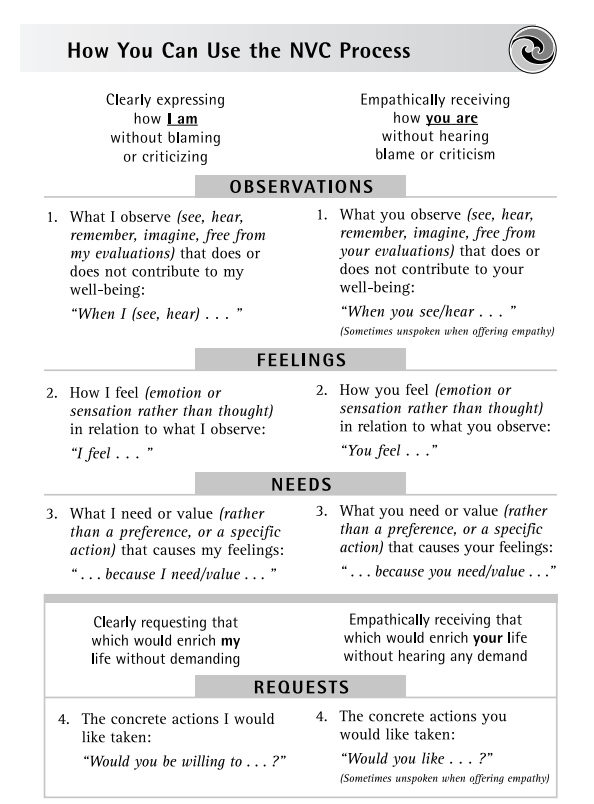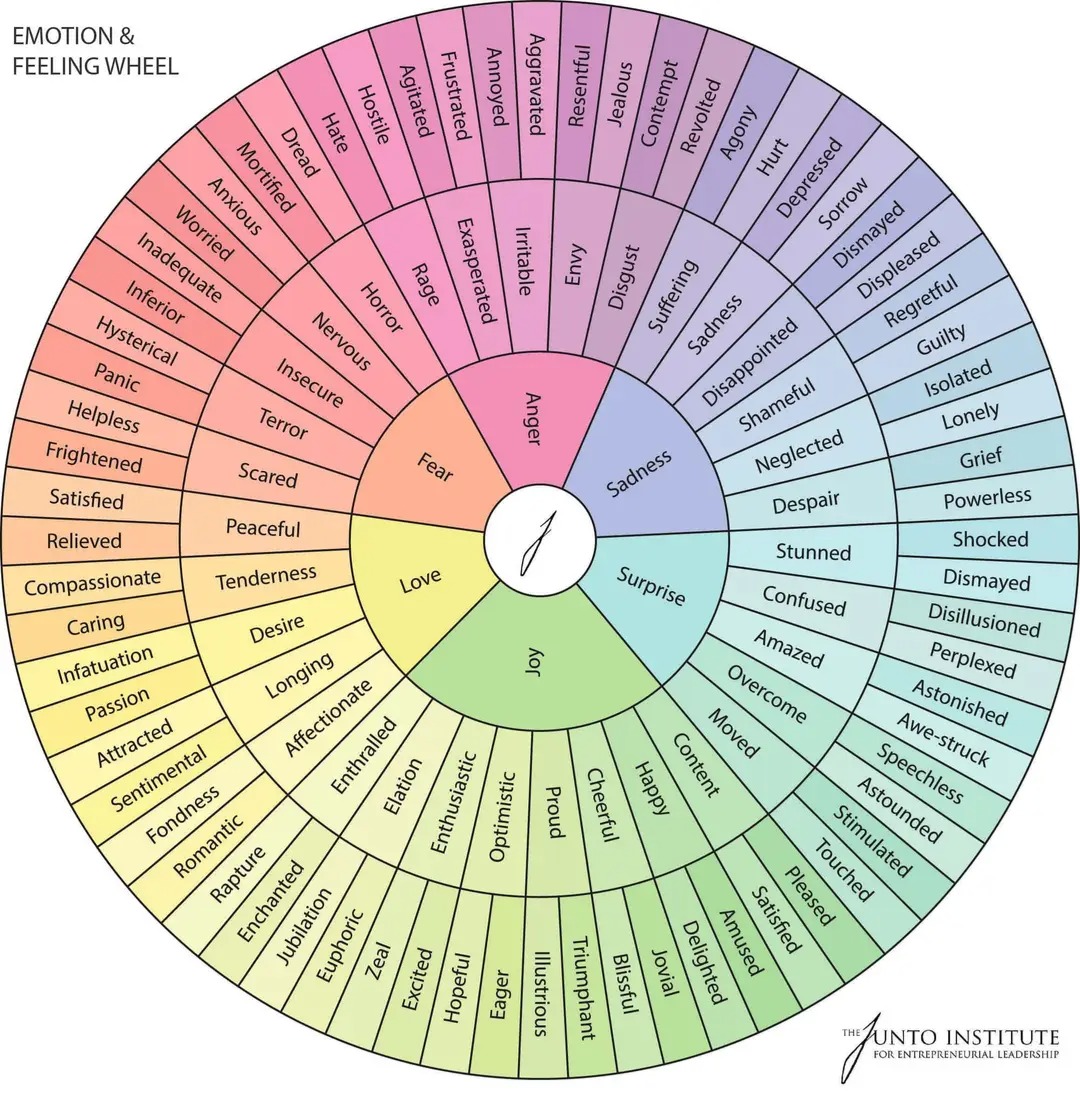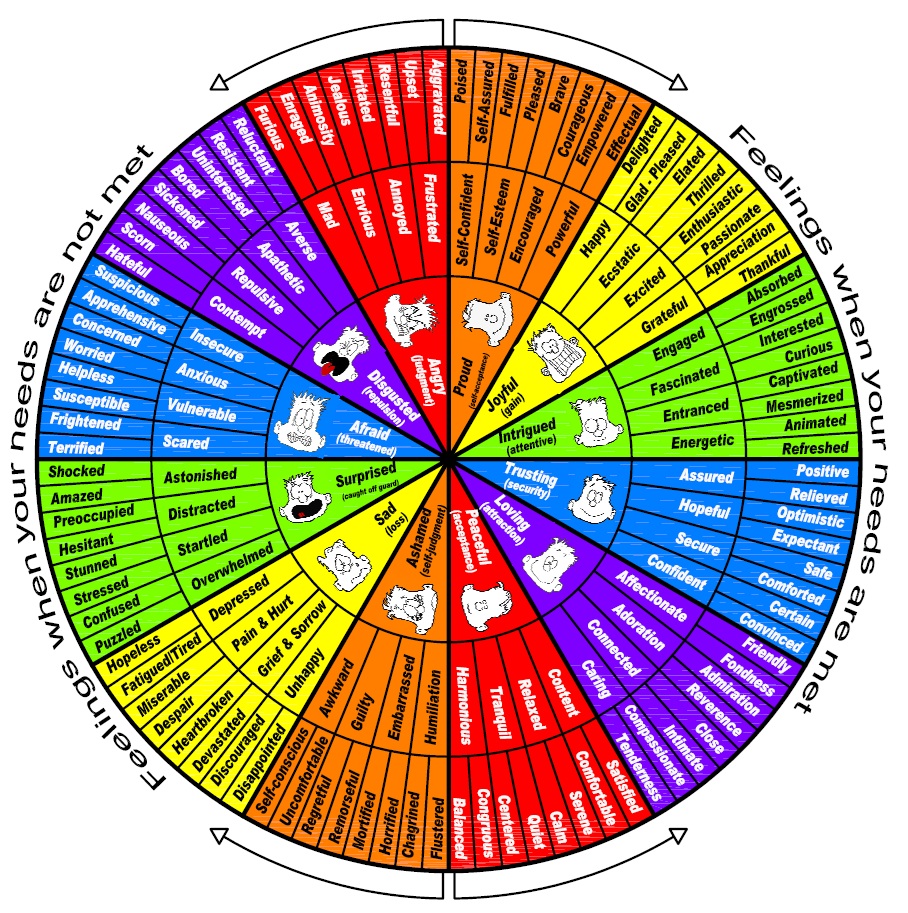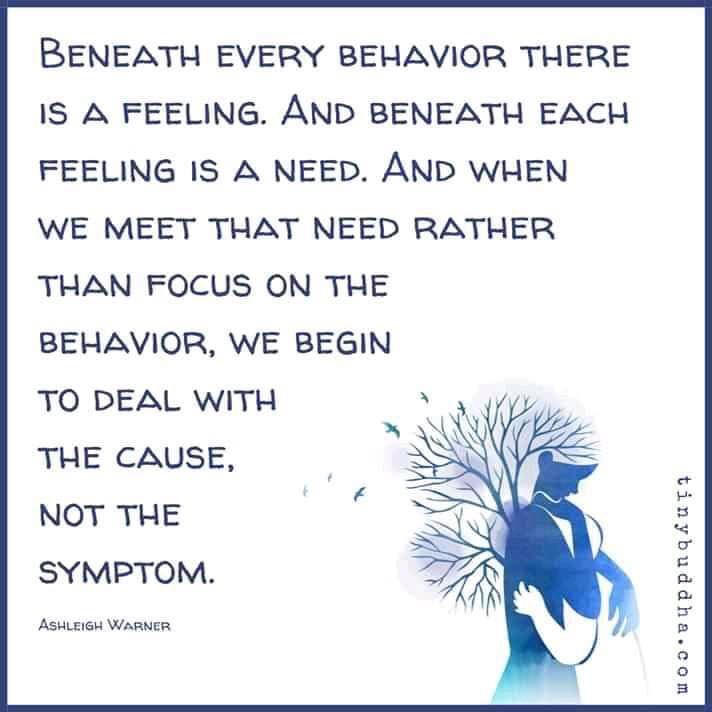 Non-violent Communication (NVC) is based on a fundamental principle: Underlying all human actions are needs that people are seeking to meet, and understanding and acknowledging these needs can create a shared basis for connection, cooperation and harmony.
Non-violent Communication (NVC) is based on a fundamental principle: Underlying all human actions are needs that people are seeking to meet, and understanding and acknowledging these needs can create a shared basis for connection, cooperation and harmony.
NVC gives us the tools and consciousness to understand what triggers us, to learn what our feelings are and how they are connected to our met or unmet needs and how to take responsibility for our reactions. In this way we can deepen our connection with ourselves and others.
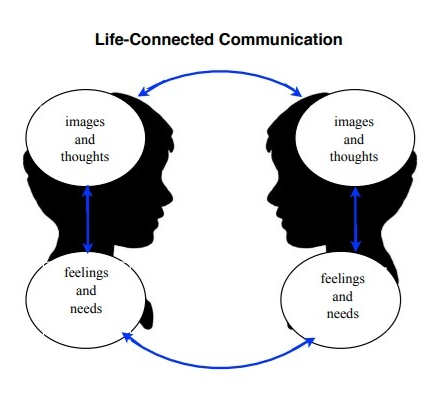
When we are aware of our feelings and needs and include them in our conversations we can help ourselves and each other to meet those needs. This makes for more effective and more compassionate interactions between humans.
Understanding each other at the level of our needs creates connection because, at this deeper human level, the similarities between us outweigh the differences, giving rise to greater compassion. When we focus on needs, without interpreting or conveying criticism, blame, or demands, our deeper creativity flourishes, and solutions arise that were previously blocked from our awareness. At this depth, conflicts and misunderstandings can be resolved with greater ease.
Nonviolent Communication focuses our attention on compassion as our motivation, rather than fear, guilt, blame, or shame. It emphasizes taking personal responsibility for our choices and improving the quality of our relationships as our goal. It is effective even when the other person or group is not familiar with this process.
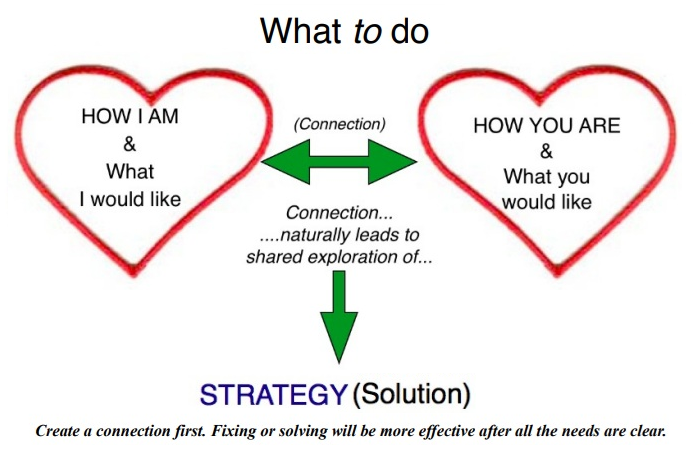
By being aware of our own and the other person’s feelings and needs and communicating these clearly to other people, all parties involved can have more of their needs met which results in greater fulfillment in individuals and more harmony between people.
Non-violent Communication is based on the premise that:
-) We are all simply trying to get our needs met.
-) We do better if we know how to get these needs met through cooperation rather than aggression.
-) People naturally enjoy contributing to the well-being of others when they can do so willingly.
The Intent of Non-violent Communication is to:
-) Create more satisfying personal connections.
-) Meet our needs in ways that honor our own values and the values of others.
-) Heal from previous experiences and relationships that have been painful or unsuccessful.
With Non-violent Communication Skills, You Can:
-) Resolve feelings of anger, guilt, shame, fear, and frustration.
-) Redirect anger or frustration toward coalition-building and cooperative outcomes.
-) Create solutions based on safety, mutual respect, and consensus.
-) Meet basic individual, family, community, and societal needs in life-serving ways. Non-violent Communication is a 4 step process that teaches people how to:
Non-violent Communication is a 4 step process that teaches people how to:
1) Objectively observe a situation.
2) Identify the feelings that the situation brings up within them.
3) Go inwards and discover what the underlying unmet needs are.
4) Request in a concrete, specific and actionable way what the other person can do to meet the need. Always with the freedom for the other person to negotiate or decline the request.
Read a 6 page introduction on the basics of NVC here. (mirror)
1. Observations
Describe the situation objectively, without judgment or blame. Focus on specific actions or events you observed. For example:
- “You raised your voice during our conversation.”
- “The report was submitted three days late.”
- “I noticed dirty clothes on the floor for two days.”
2. Feelings
Identify and express your emotions about the situation. Avoid blaming others for your feelings. Make I statements and describe what feelings get activated in your system. For example:
- “I feel scared and sad when this happens.”
- “I’m worried about missing the deadline.”
- “I feel stressed and angry seeing laundry spread out over the floor.”
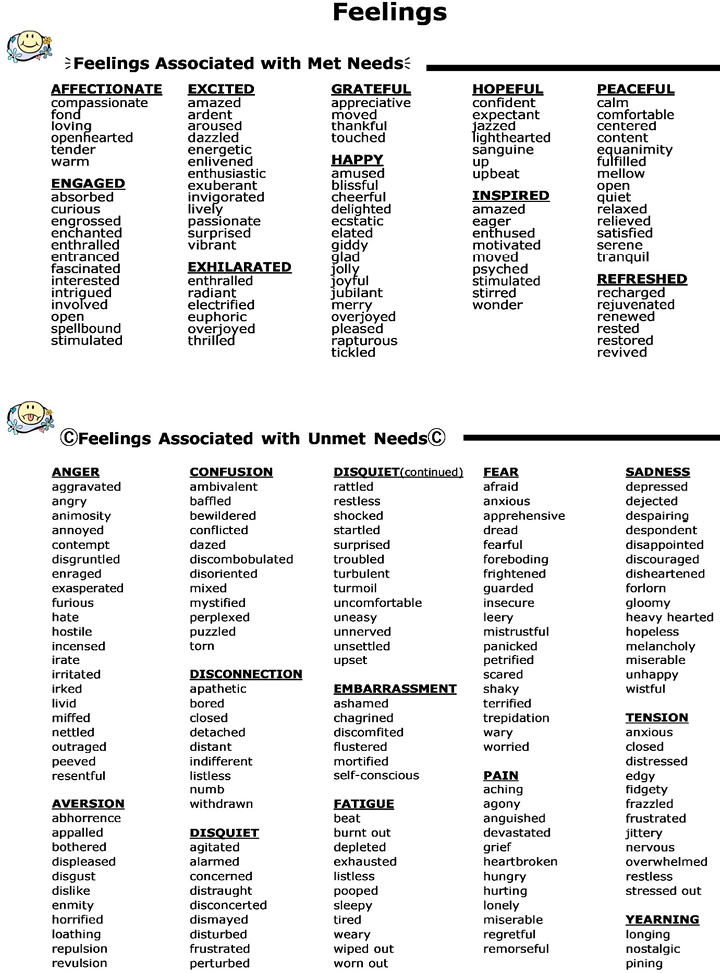
Oversight of feelings associated with met/fulfilled needs and feelings associated with unmet/unfulfilled Needs
3. Needs
Connect your feelings to underlying values or needs (e.g., respect, safety, cooperation). For example:
- “I need safety and kindness in how we communicate.”
- “I value reliability and teamwork.”
- “I need order to feel calm and peaceful at home.”
It can be good to dive deep into what our general human needs are so it becomes easier to identify them. For this reason we made this Universal Human Needs Framework.
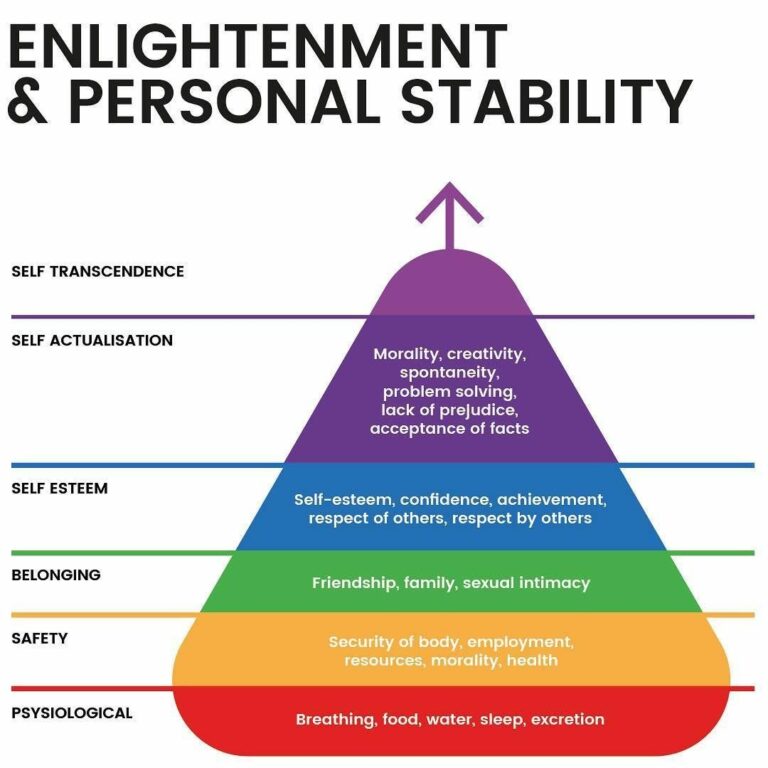
Maslow’s pyramid of the hierarchy of human needs gives a good idea of what is important to the surviving and thriving of an individual human being. We all have similar needs as humans.

Understanding our own needs and being able to express them can make us understand ourselves better and gives others an opportunity to understand us better also. Just like we understand others better if we know their needs.
Tim Fletcher has made a great video about how people can learn about their 12 basic needs, how they can learn to meet these themselves and how they can ask others to help meet them in addition.
4. Requests
Ask for a specific, actionable change to meet your need. Frame it as a question, not a demand. Also people should always have the freedom to say no or make a counter proposition. For example:
- “Could we speak calmly and take turns listening?”
- “Would you update me earlier if deadlines shift?”
- “Can you put your dirty laundry in the basket daily?”
That is a pretty short version of the process. To understand it a bit more here in this video an example of a full workshop given by Marshall Rosenberg, the founder of Non-violent communication.
It takes a bit of time and effort to understand this process but once you get it, it makes a lot of sense and it is very practical tool in your interpersonal relationships. It can really transform how you both interact with yourself and with the people around you. And so give you both more Inner Peace and Outer Joy in the form of more harmonious relationships with yourself and with others.
More information:
-) Website of the Center for Nonviolent Communication
-) Free NVC resources and handouts
-) Read a 6 page introduction on the basics of NVC here. (mirror)
-) NVC resources collected, list of feelings, list of needs, quick explanation of the proces, etc. (mirror)
-) Universal Human Needs Framework
-) Tim Fletcher on the 12 basic needs we all have.
-) A great podcast series on NVC
Related articles:
-) Have a look at our free Arcturian Academy
-) Follow your Curiosity – Bliss – Excitement
-) The Hero’s Journey – An archetypal blueprint for our lives
-) Setting good goals for 7 key areas in your life
-) Designing everyday healthy habits
-) Aligning with Natural Law to optimize Freedom
-) The Power of 8 – Creating a harmonious group energy field
-) Designing natural abundance with Permaculture

